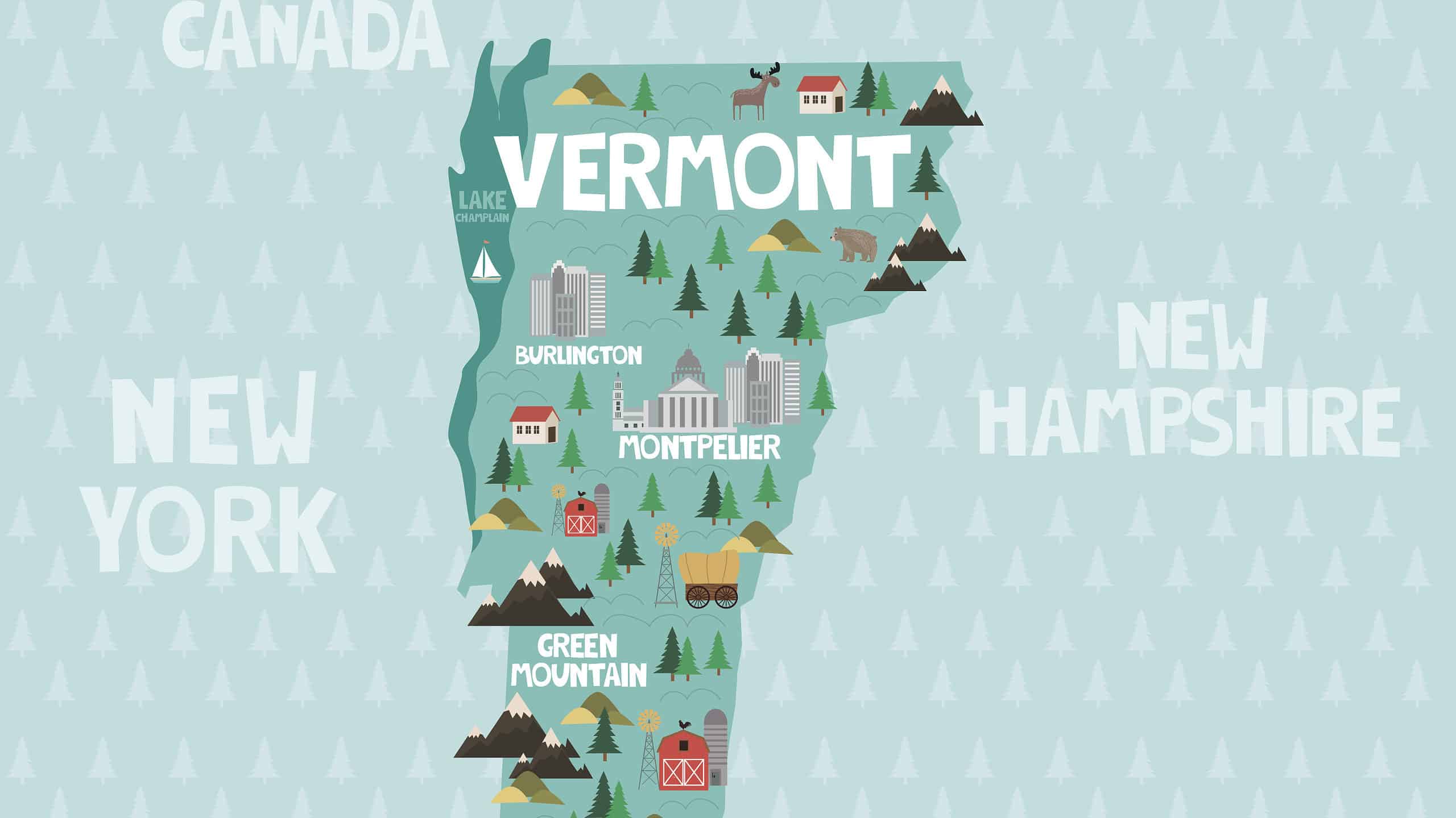Vermont’s population of 647,064 makes it the second least populous state in the country, and the largest cities in Vermont are home to many of those residents. It’s a state where tourism is a leading means of revenue. Much of the economy is driven by things that matter to visitors, including state parks, lakes, and skiing.
Coming in at ninth place in U.S. News & World Report’s “2023 Best States” rankings, Vermont holds a top three spot in “Opportunity” and “Crime.” Take a closer look at this state’s largest cities in terms of population, total area, and economic impact.
Largest Cities in Vermont by Population (2020)
As one of the nation’s smallest states, big cities aren’t the norm. Vermont only has 10 incorporated cities, but many towns have larger populations and are often referred to as cities. Counting only official cities, only four have populations exceeding 10,000 people.
| Rank | City | Population |
| 1 | Burlington | 44,743 |
| 2 | South Burlington | 20,292 |
| 3 | Rutland | 15.807 |
| 4 | Essex Junction | 10,761 |
Burlington
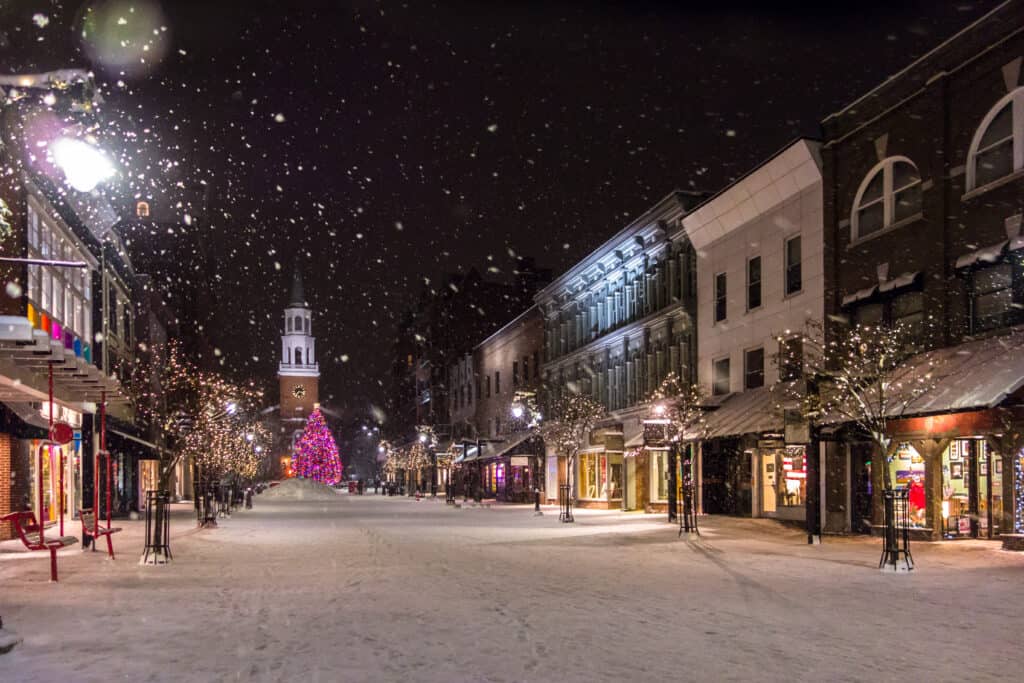
Burlington is the most populous Vermont city and a tourist destination thanks to Church Street Marketplace’s range of shops and restaurants.
©iStock.com/Alex Boudreaux
While Burlington is Vermont’s most populous city at 44,743, it’s also at the top of the list for most populous cities with the smallest populations. It may be Vermont’s largest city in terms of people living there, but it’s tiny compared to other small cities in the U.S.
The city’s racial and ethnic makeup hasn’t changed. As of the 2020 U.S. Census, 85.6% of the population were White with a mix of two or more races (4.8%) and Asians (4.6%) in the second and third spots. This matches the 2010 U.S. Census findings.
Because Burlington aims to be net zero by 2030, the city-owned electricity company, Burlington Electric, draws on power from wind, solar, wood, and hydro from a dam on the Winooski River. Burlington is the first city in the U.S. to be 100% sustainable.
With the closure of the city’s two-level shopping mall, many retailers left Burlington and headed to the suburbs. Construction of the mall’s replacement, CityPlace, started in 2023 and will bring more retailers, office space, and much-needed housing to the city.
South Burlington
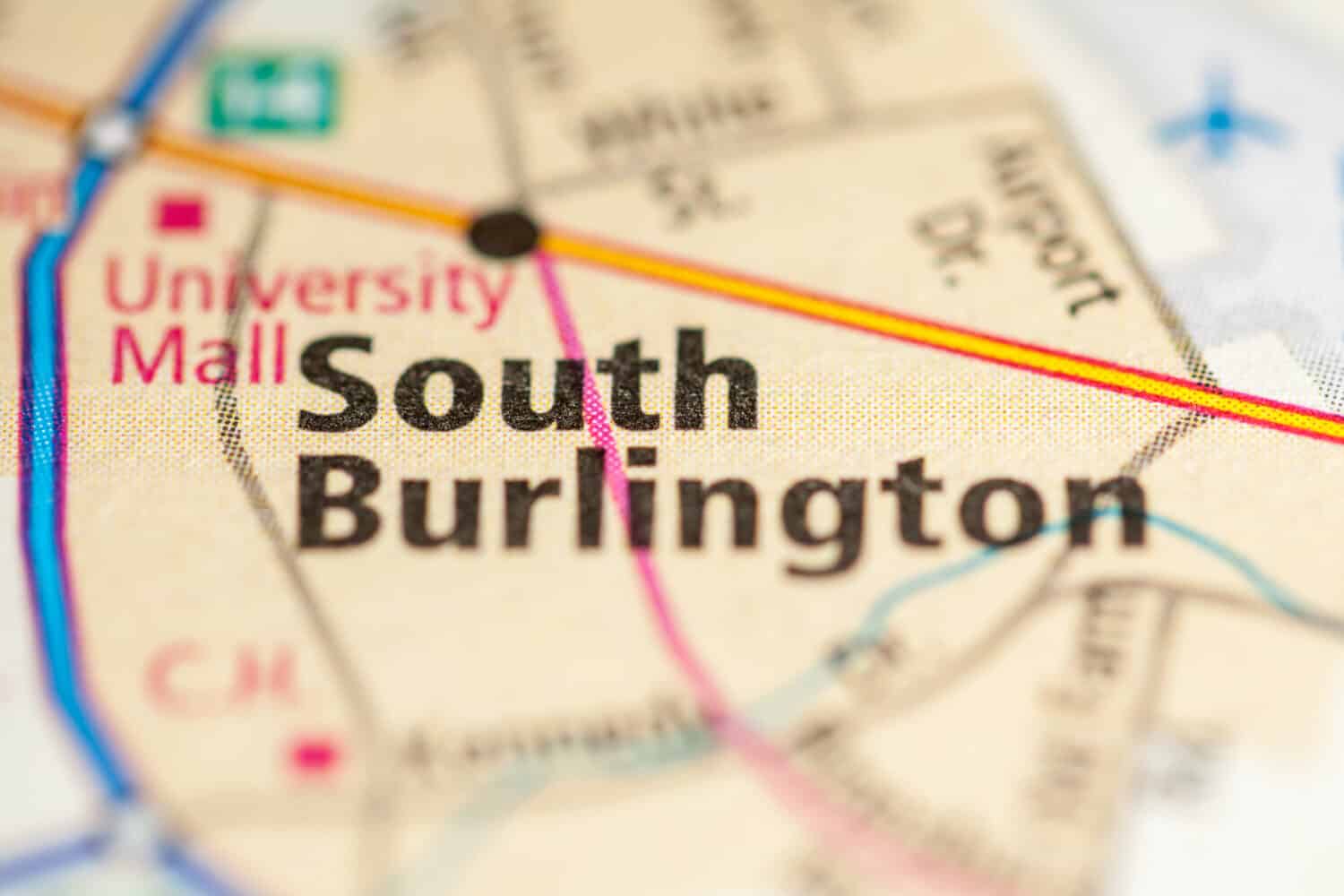
South Burlington’s city developers plan to make it easier to walk to the University Mall and other shopping areas. Image: SevenMaps, Shutterstock
©SevenMaps/Shutterstock.com
Initially, South Burlington was part of the Burlington township, granted from New Hampshire in 1763. However, it was incorporated in 1971. Today, the population of 20,292 is mostly 87.6% White with 5% Asian and 3.7% Hispanic/Latino.
City development is underway to turn 300 acres of South Burlington into a pedestrian-friendly city. With more housing and better access to the state’s largest shopping mall and other major retailers, the population should grow substantially in the next decade.
Rutland
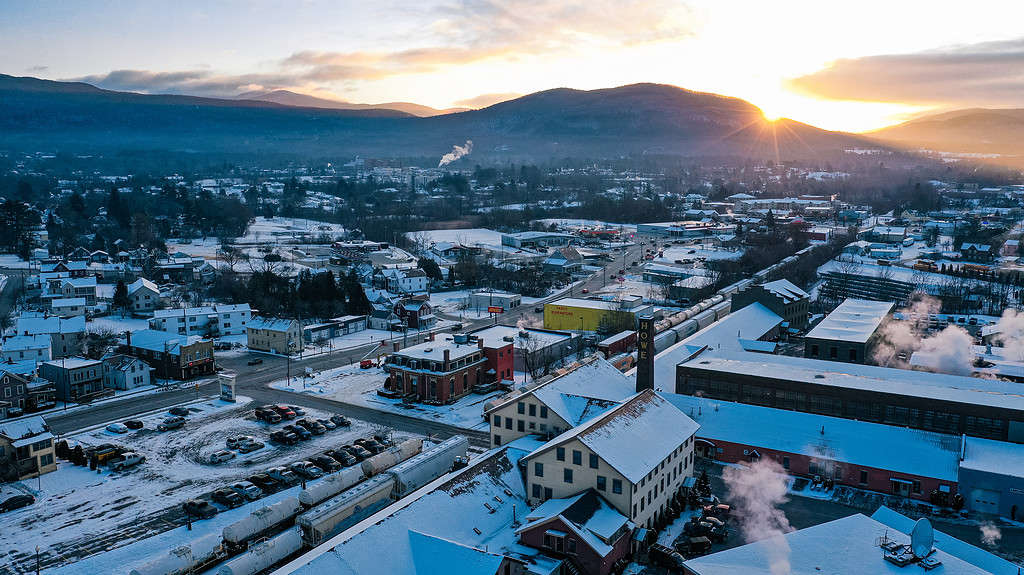
Rutland is the seat of Rutland County and has a historic district listed on the National Register of Historic Places.
©TC Franco/iStock via Getty Images
With a population of 15,807 people, Rutland is the state’s third-largest city. The racial/ethnic breakdown is 93.7% White and then 3.3% are a mix of two or more races. Approximately 23.4% of the city’s population is at retirement age, which is why the city is home to Vermont’s second-largest hospital.
Both of the city’s malls shut down, but revitalization in the historic downtown brings people to the area for the brewery, year-round farmers’ markets, shopping, and dining. Center Street Marketplace and revitalization of the train station are also in progress to bring more opportunities for work and tourism.
Essex Junction

©SevenMaps/Shutterstock.com
Burlington, South Burlington, and Essex Junction provide easy commutes for workers thanks to Green Mountain Transport, the public bus system.
The fourth largest city in Vermont saw a large population increase when IBM moved in. From 1957 to 2015, IBM was the city’s major employer. However, IBM sold to GlobalFoundries in 2015, leaving only a smaller portion of IBM behind. Still, the population of 10,590 is supported by a mix of retail, restaurants, a hotel where the New England Culinary Institute once made its home, and businesses like GlobalFoundries.
Essex Junction is a newer city, as it wasn’t until July 1, 2022, that Essex and Essex Junction officially separated. At that point, Essex Junction was incorporated as a city.
The racial and ethnic breakdown in Essex Junction is slightly different from other cities. Just over 83% of the residents are White, and 5.9% are two or more races. Asians and Blacks/African Americans are at 4.7% and 4.6%, respectively.
Biggest Cities in Vermont by Total Area (Square Miles)
While Rutland County is home to the town of Chittenden, which spans 73.8 total square miles, Chittenden isn’t a city. Vermont’s cities have small total areas due to the state’s size. From the Canadian to the Massachusetts border, it’s no more than a three-hour drive.
| Rank | City | Total Square Miles |
| 1 | South Burlington | 29.58 |
| 2 | Burlington | 15.49 |
| 3 | Montpelier | 10.25 |
| 4 | Rutland | 7.68 |
South Burlington
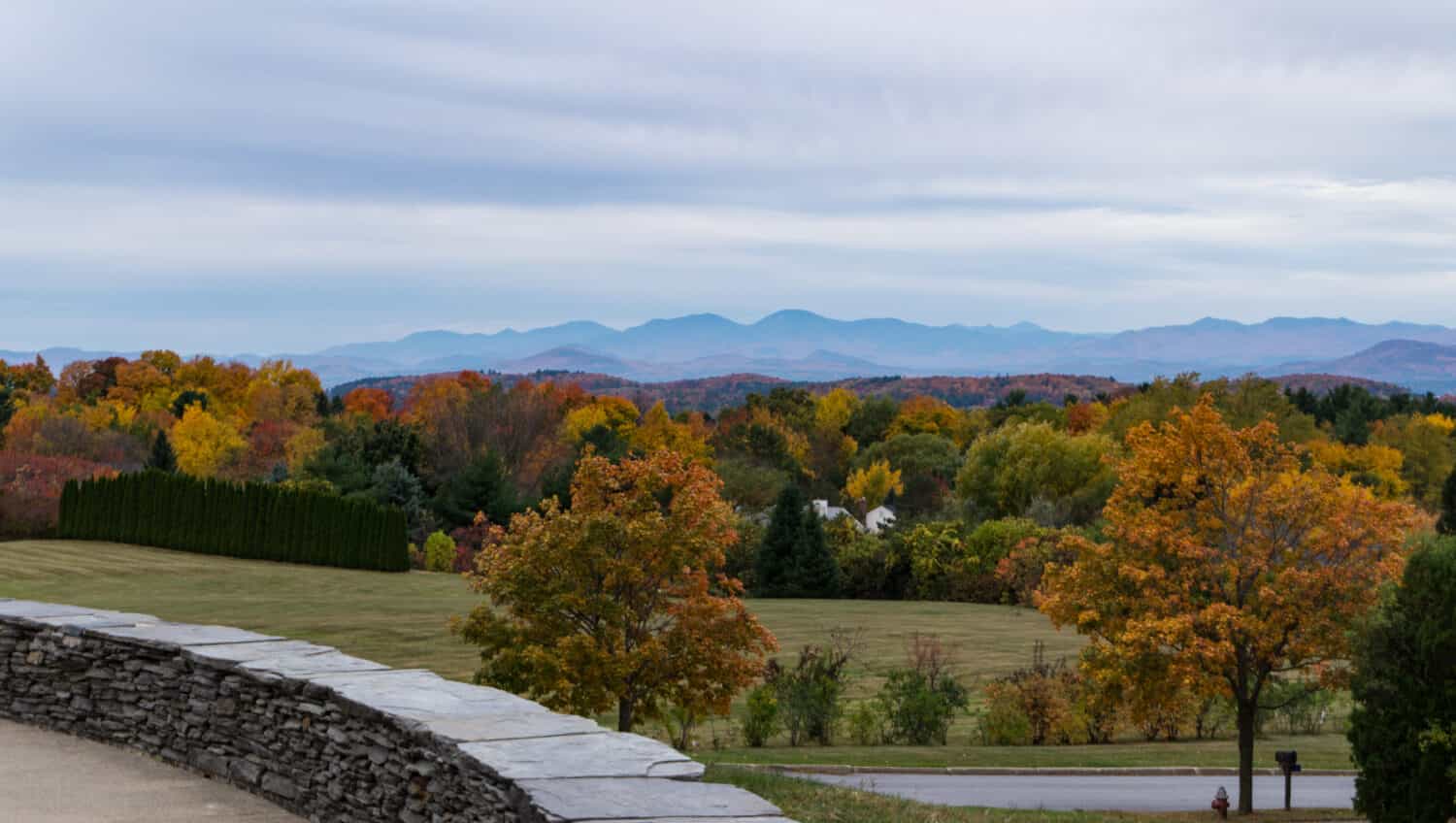
South Burlington’s Overlook Park spans almost two acres of outdoor space, providing views of New York’s Adirondacks. Image: vermontalm, Shutterstock
©vermontalm/Shutterstock.com
South Burington surrounds the small city of Burlington on two sides, as it’s a very expansive city. Some of the city’s 29.58 square miles house the Vermont National Guard base and Patrick Leahy Burlington International Airport. Expansive green spaces like Overlook Park are also found within the city’s borders, but a lot of the city is not land-based. The city is surrounded by the Winooski River to the north and Lake Champlain to the west, which means 13.09 square miles of the city’s total area is water.
As Vermont is small, the climate doesn’t vary much, and weather patterns vary. Summers are often hot and humid, while winters get brutally cold, especially when you add the wind chills. Expect the coldest weather from December through February, at which point it tends to begin the slow melt, leading to the sugaring season. The lowest temperature ever recorded in that area was -30º F and the hottest was 101º F. In the 2022/2023 season, South Burlington received almost 50 inches of snow. Rainfall averages around 37 inches per year.
Burlington
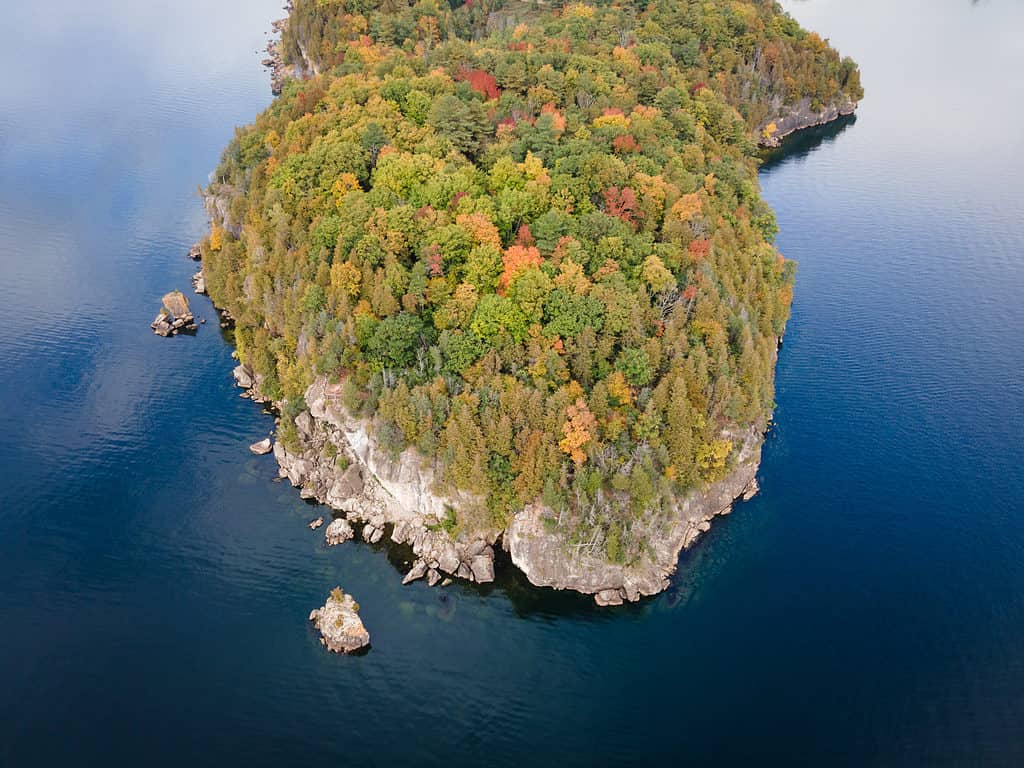
Lone Rock Point in Burlington is a limestone bluff with a 1.1-mile trail that’s accessible from the city’s bike path.
©iStock.com/Eifel Kreutz
Burlington and South Burlington are nestled together, with Burlington at the bottom of a hill leading to Lake Champlain. You won’t find any variation in weather between the two. It’s not the largest city at 15.49 square miles, and 5.91 square miles are in the water so that makes it even smaller.
This doesn’t mean that Burlington is without green space. The Intervale is a large reclaimed area within Burlington with more than 360 acres used for farming and agriculture. The Burlington Greenway is an eight-mile bike path for bikers and pedestrians that leads from Oakledge Park to the Winooski River. At that point, there is a pedestrian ferry that brings riders across to the Champlain Islands.
Montpelier
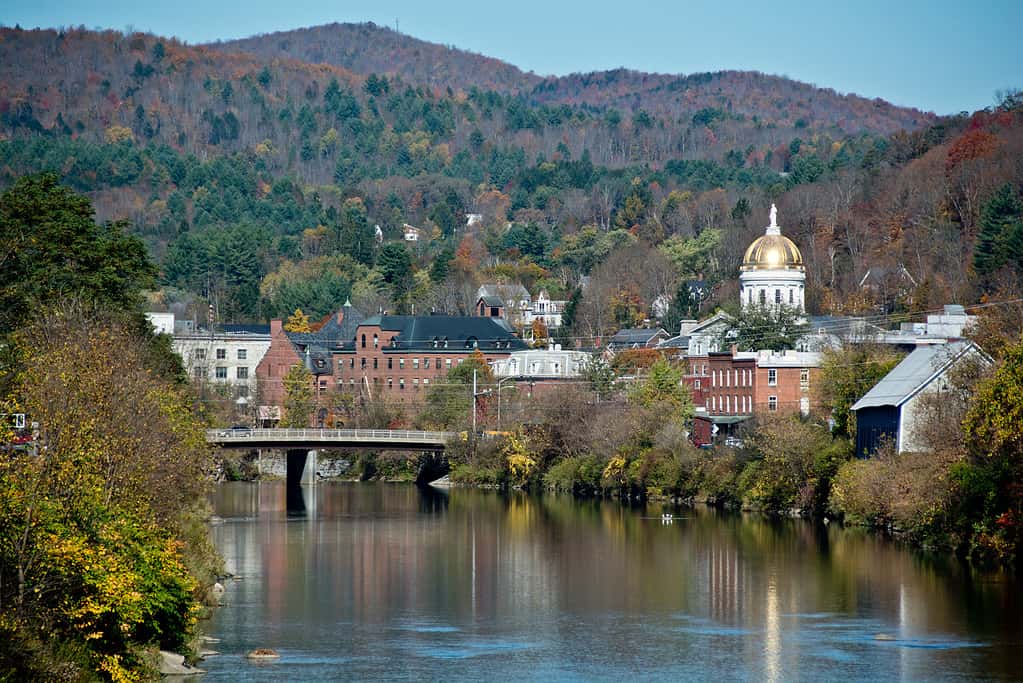
Montpelier’s total area sits on both sides of the Winooski River and extends into the hills.
©ErikaMitchell/iStock via Getty Images
Montpelier is the state’s capital, but it’s a small city nestled in the hills. The city covers 10.25 square miles, and approximately 0.2 square miles is water. Downtown Montpelier is 520 feet in elevation, tucked in a flat area along the Winooski River with granite ledges and hills that travel up about 900 feet. This narrow valley is prone to flooding the downtown, with three major floods (1927, 1992, and 2023) happening within the past century.
The climate is similar to the rest of Vermont. Montpelier’s record high is 97º F, while the record low is -34 º F. Rainfall averages just under 39 inches per year, and snowfall averages are similar at 37 inches.
With three natural areas to explore, there’s plenty to do outside. Hubbard Park spans 194 acres and was created to restore natural areas after land was razed for farming. The man responsible for designing Hubbard Park had a stone observation tower built to allow for the best views of the city below. Started in 1915, the 52-foot Hubbard Park Observation Tower took 15 years to complete and remains open today.
Rutland

In the 1850s, marble quarries contributed to Rutland’s economy, but they all closed by the 1990s and left West Rutland as a semi-rural community.
©iStock.com/morgainbailey
Rutland is the fourth largest Vermont city at 7.68 square miles. It’s not large, but there’s a lot to explore. Rutland is surrounded by Rutland Town, which includes West Rutland and the wildlife refuge at West Rutland Marsh.
The weather in Rutland is comparable to the weather in Burlington. It’s cold and snowy in the winter and hot and humid in the summer. As Rutland is farther south, fluctuations lead to some years being rainy or snowier in the southern part of the state or Northern Vermont may see more rain and snow than Southern Vermont.
Largest Cities in Vermont by Economic Impact
Vermont’s economy is based heavily on tourism. The state is known for its mountainous slopes for winter skiing and snowboarding and summer camping and hiking. Plus, the arrival of spring gets sap flowing for the bustling maple industry. Healthcare is the largest industry in terms of annual revenue, but manufacturing and agriculture are close behind. Per the Federal Reserve, the GDP in Vermont was $40.83 billion in 2022, which was an increase of approximately $3 billion from 2021.
| Rank | City | GDP (in billions) |
| 1 | Burlington/South Burlington | $13.1 |
| 2 | Barre | $3.4 |
Burlington/South Burlington
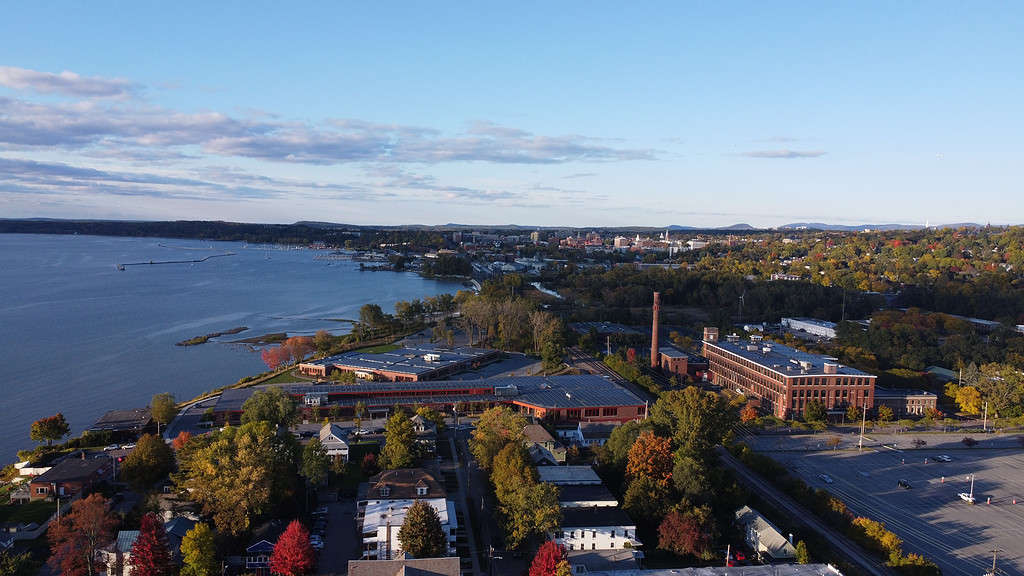
Views from nearer the South Burlington city lines and heading north into Burlington, the two largest cities in Vermont in terms of economic impact.
©Wirestock/iStock via Getty Images
Federal Reserve databases combine Burlington and South Burlington into one GDP, and that’s not surprising given that Burlington’s airport is in South Burlington. The Vermont Department of Taxes shares more insight into what makes these two cities stand out.
South Burlington ranks highest when it comes to sales and use tax revenues. During 2022, the city brought in $1.665 billion, but Burlington was close behind at $1.096 billion. Area stores, restaurants, theaters, and museums draw locals and tourists. Plus, the University of Vermont Medical Center (UVMMC) is in Burlington, but specialists have practices scattered throughout the state, including a large cardiac rehabilitation center in South Burlington. UVMMC is the state’s largest employer with more than 8,800 employees.
Burlington is also home to Champlain College and the University of Vermont, so students live in both towns during the school year. Higher education revenues, rental income, and student purchases at the cities’ major grocery stores bolster the prospering economy.
Barre

Polycor Inc.’s Rock of Ages granite quarry near Barre is one of the area’s largest contributors to the economy for both granite products and tourism.
©Ray Tan/iStock via Getty Images
Barre alone brings in $19.135 million in sales and use tax revenues, but Barre Town adds another $5.6 million. That’s just sales and use taxes. Barre is an industrial city known as the “Granite Center of the World,” and many locals work in that industry. Granite from Barre is crafted into monuments and stone sculptures around the world. The U.S. Korean War Memorial in South Korea is made from Vermont granite.
Some of Vermont’s cities and towns didn’t rank at the top of the list, but they’re areas to watch. St. Albans is one of them. The city’s population is 6,887, but a large federal grant means the city is adding a connector and new housing and businesses, while also making the city more pedestrian-friendly, without taking away from the parks and forested areas.
Large cities are vital to the state’s economy and public services. While Vermont ranks well as a great place to live, the tax burden on residents is high. With a strong economy, it helps bring in vital revenues. Vermont’s population, open spaces, low crime rates, and economic growth continue to make this one of the nation’s best.
Thank you for reading! Have some feedback for us? Contact the AZ Animals editorial team.

